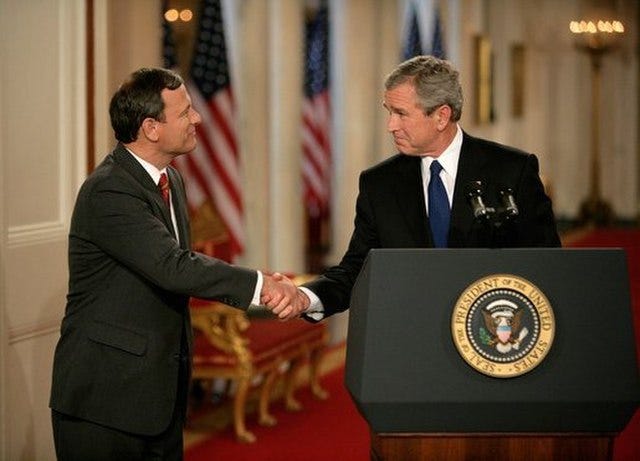Revisiting John Roberts's Path to Confirmation
The launch of the 'Roberts Court'
As John Roberts approaches the end of his 20th term as chief justice, let’s look back at the battle over his Supreme Court nomination—or, rather, nominations in the plural—in 2005.
I’ll start by going much further back. In “The Day I Met John Roberts Changed My Life,” I recount how my interviews for a line position in the Office of the Solicitor General in the fall of 1990 set me on a career path that led years later to my extensive writing on Roberts and other Supreme Court nominees.
In “Blogging Levels the Playing Field,” I explain how the timely inauguration of National Review Online’s Bench Memos blog in the spring of 2005 enabled me to knock down ill-founded attacks on Roberts before they gained traction.
As with every nomination, Roberts’s nomination presented some unexpected controversies. You’ll find these of interest, I think:
In “First Impressions Matter,” I hail George W. Bush’s selection of Roberts for Justice Sandra Day O’Connor’s seat as a model of good process.
In “The Best Defense Is a Good Offense,” I show how key strategists for Bush, both inside and outside the White House, had Robert Bork’s defeat in 1987 fresh in their minds and had determined to learn from it in order to prevent a repeat defeat.
I discuss the birth of the “Roberts Court” in “On Rehnquist’s Death, Bush Faces a Decision.”
And in “The Umpire Strikes Back,” I celebrate Roberts’s simple simile—“Judges are like umpires”—that emphasizes the judicial duty of impartiality, and I contrast it with Barack Obama’s convoluted “empathy” standard.



